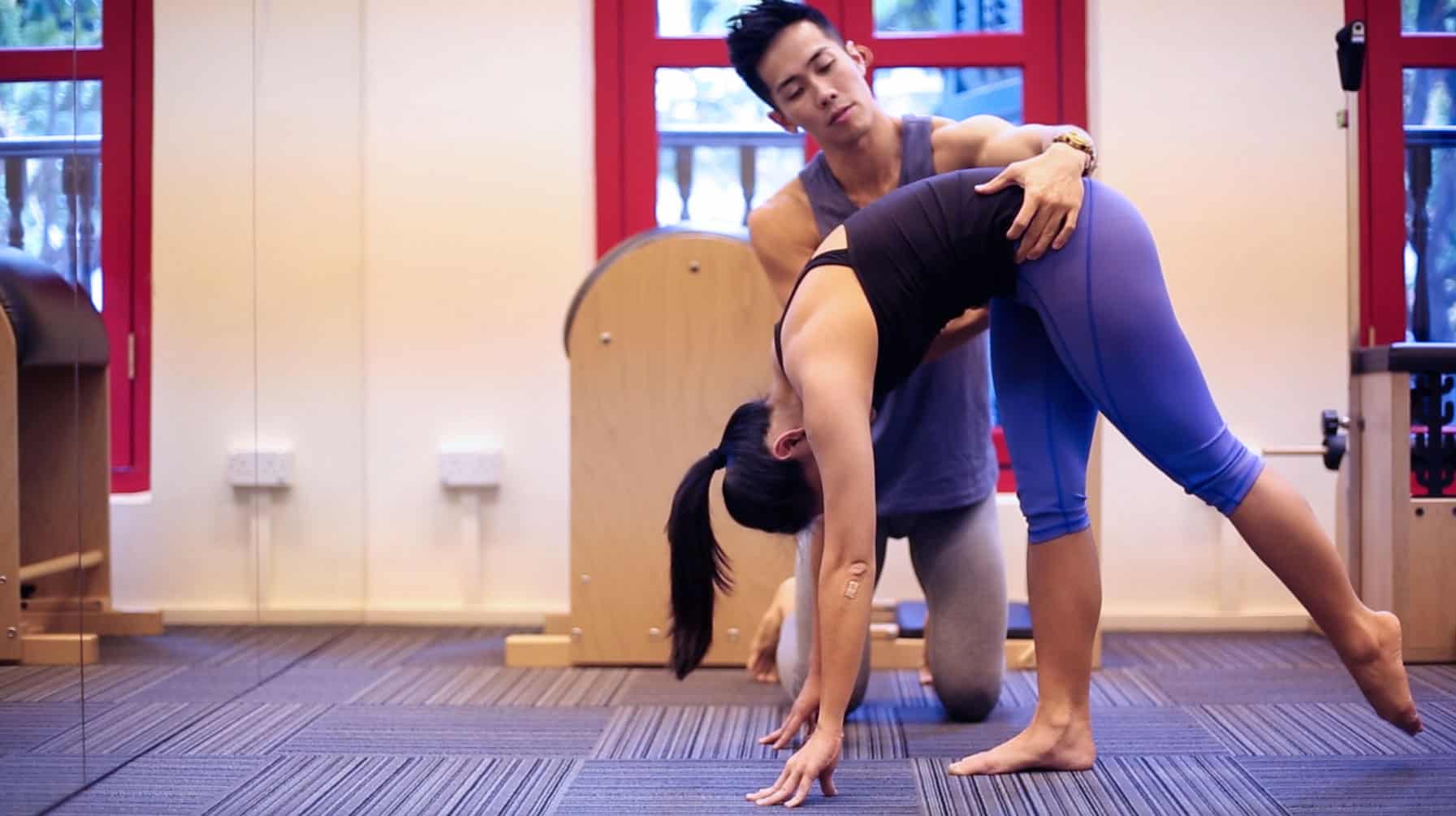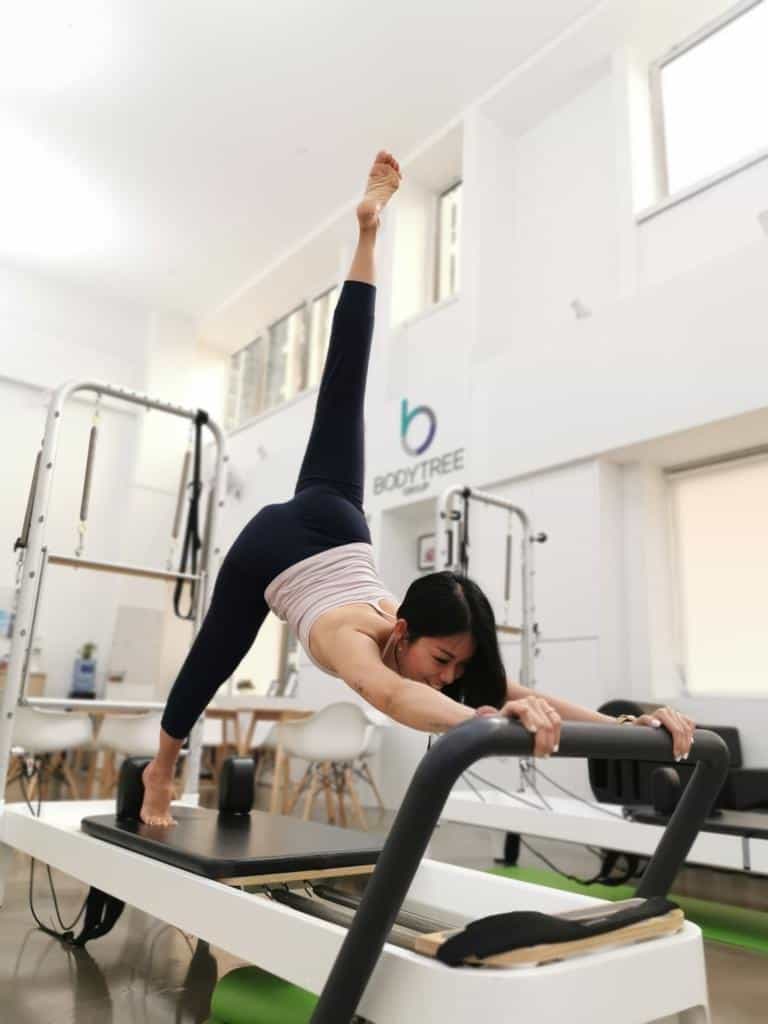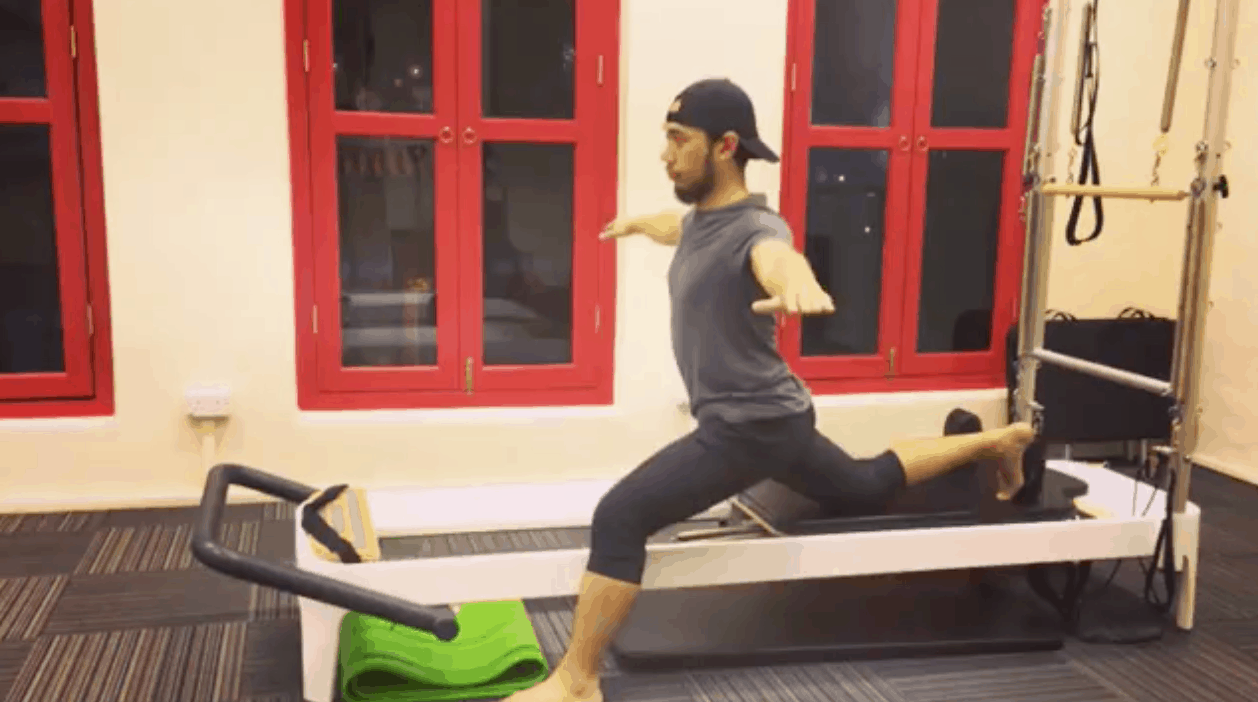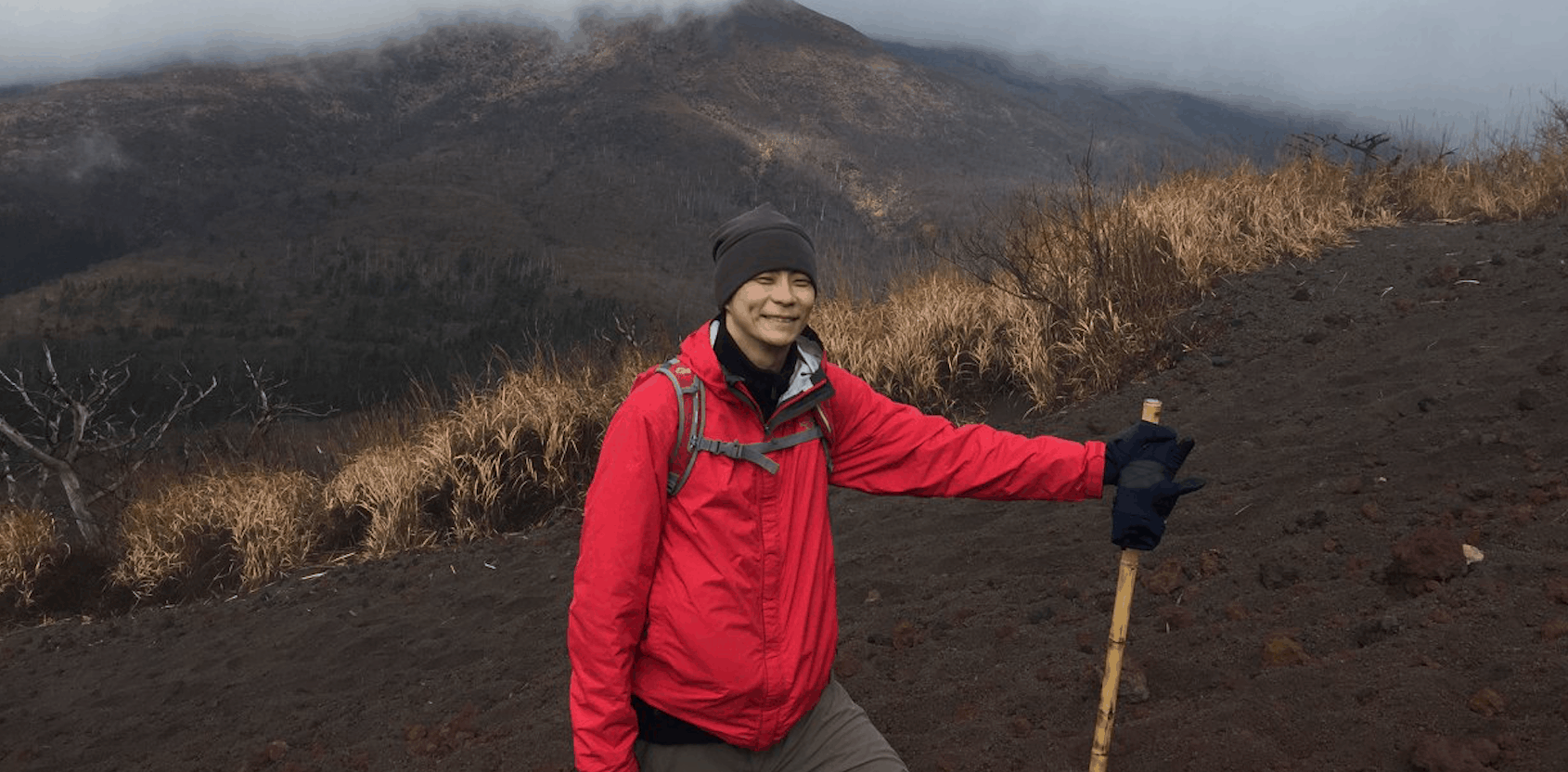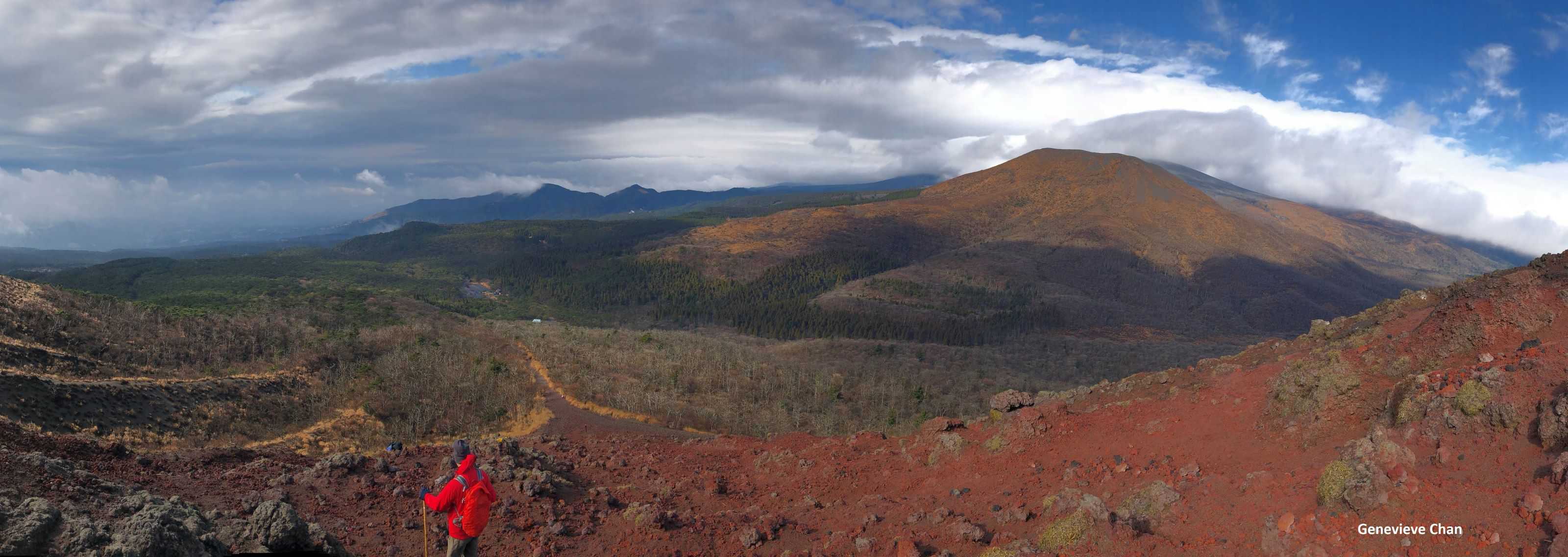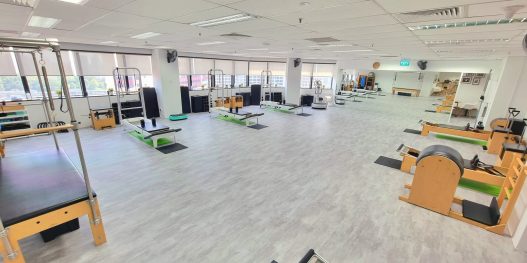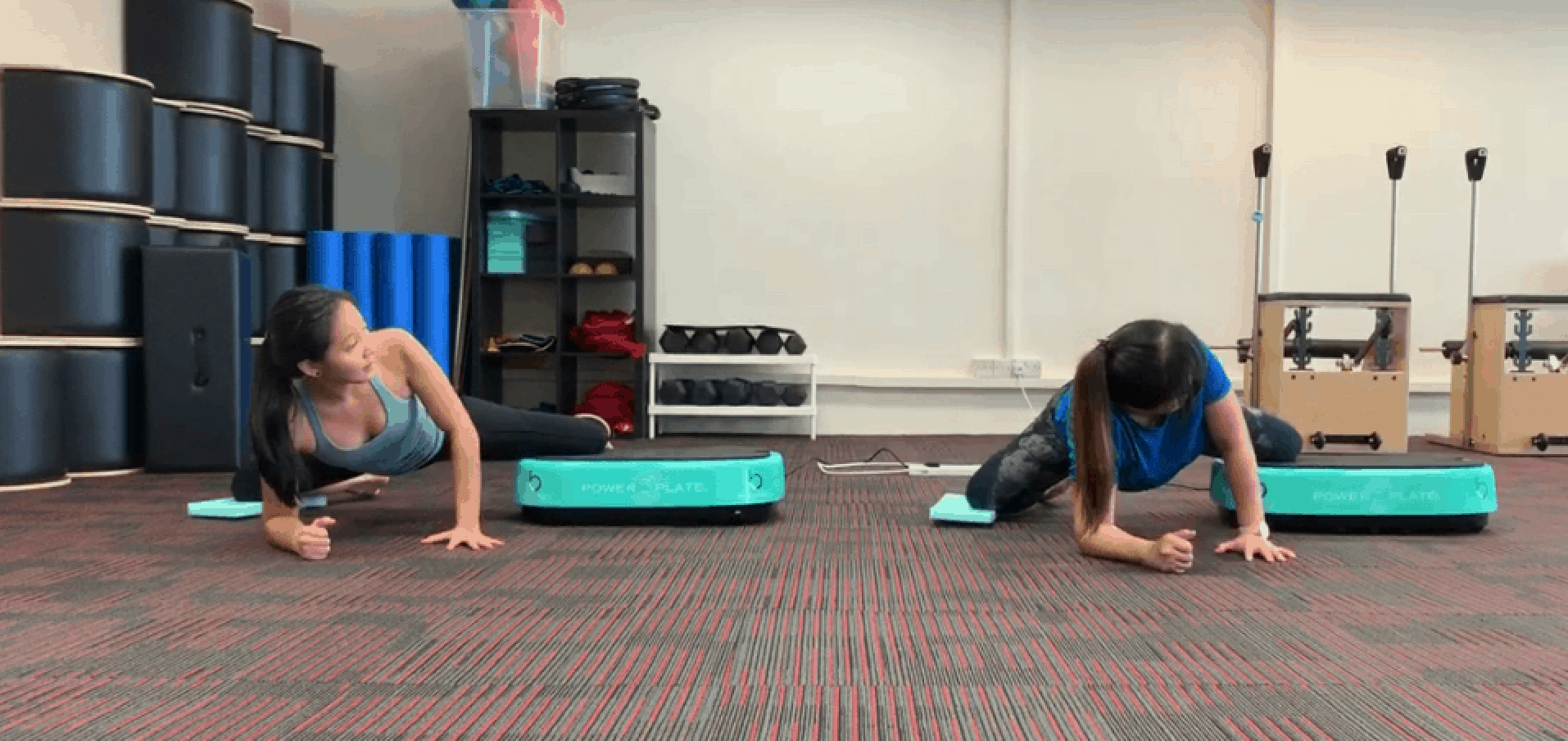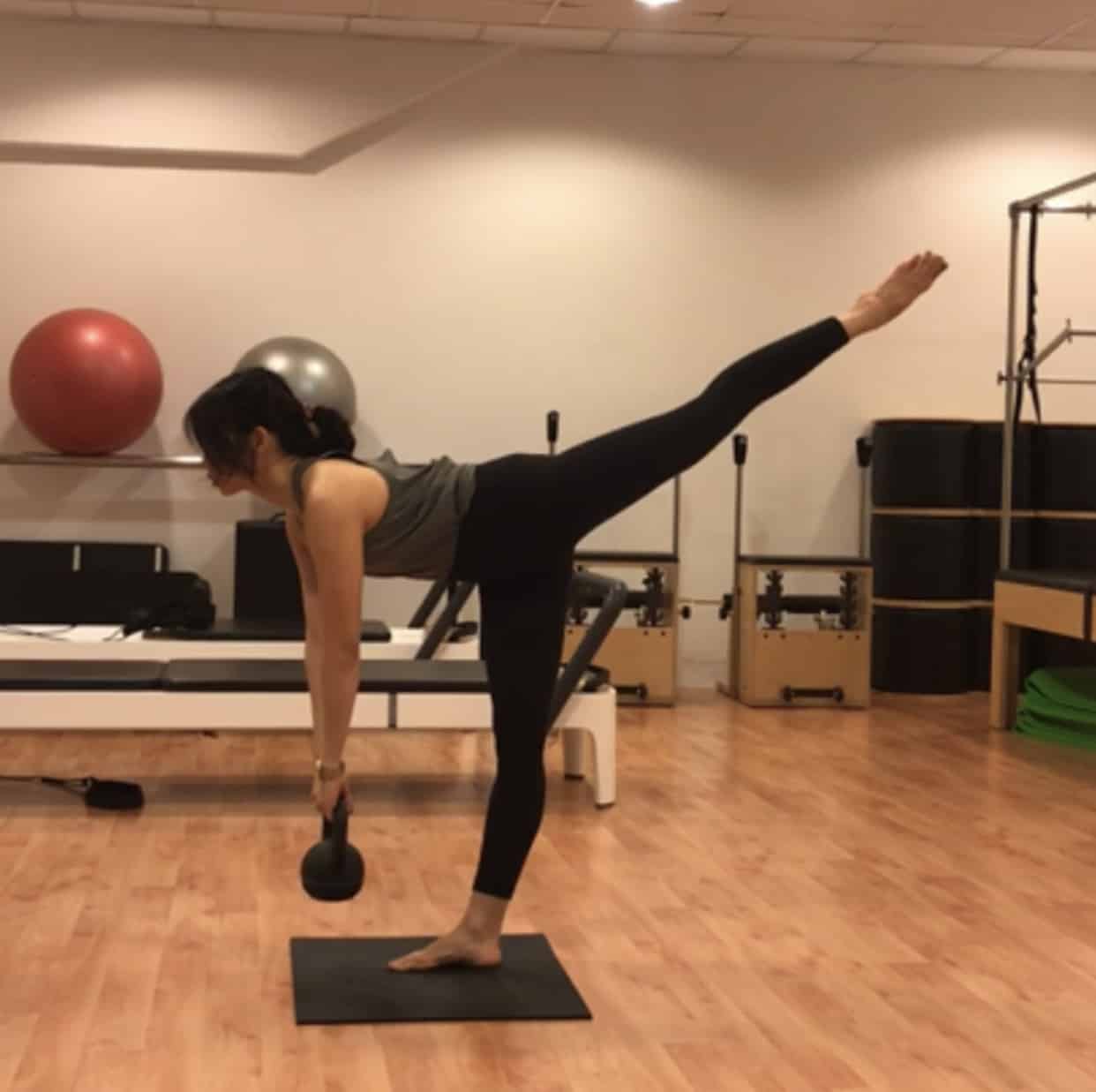When students start doing Pilates, they are usually unaware that the human spine can move in more than one direction, and what these movements are.
1. FLEXION
Flexion of the spine is seen in movements like Forward Bend or Roll Down :
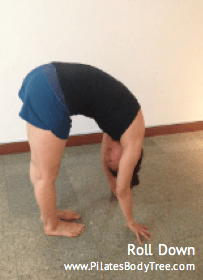
Flexion of the spine also occurs in Pilates exercises such as The Hundreds, Spine Stretch and Cow :
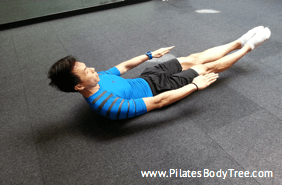
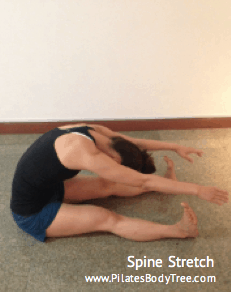
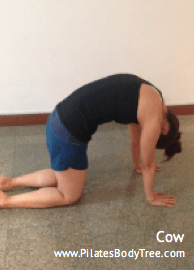
In flexion, the chest comes close to the pelvis forming a round shape of the spine. It does not matter what position the body is in – standing, sitting or kneeling, as long as the spine forms a rounded position, it is flexing.
In Pilates , flexion is a movement to either strengthen the abdominals or to stretch the back. In The Hundreds, the abdominals have to contract (i.e. work) to flex the spine away from the Mat, thus strengthening these muscles. However, in Roll Down, flexion of the spine stretches the back rather than strengthen the abdominals.
When your Pilates teacher say “round your spine”, s/he is asking you to flex your spine.
2. EXTENSION
Extension is the reverse movement of spinal flexion and occurs in movements such as Swan, Extension over the Spine Corrector and Seated High Release.
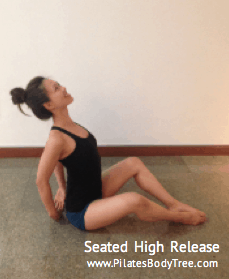
This is a key spinal movement that most of us don’t do on a daily basis, even though its an important one. Why?
On a daily basis, whether we are working at the computer, eating, driving or reading a book, our spine is in flexion for many hours. This means the front muscles – mainly the abdominals become short and weak whereas the muscles of the back become long and weak. Imagine your spine as a ship’s mast, anchored in front by the abdominals and at the back by erector muscles (or simply the back muscles). In the rounded spine position this means the mast is bent forward – i.e. the abdominals shorten to pull/bend it forward, whilst the back muscles are being “stretched” to allow the mast to bend forward. When muscles are held in such a position over years, they lose their capacity and strength to move the spine in the reverse direction.
In Pilates extension is worked in 2 ways. One to stretch the front abdominal muscles and the second to strengthen the back muscles. Movements like the Extension over the Spine Corrector helps to stretch the front abdominals and movements like Swan is to strengthen the back muscles.
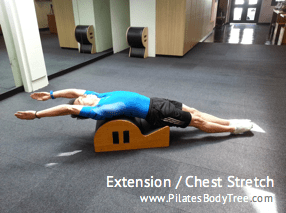
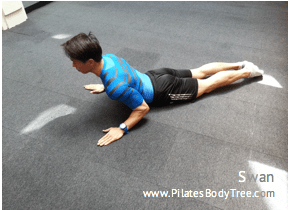
3. LATERAL FLEXION
Lateral flexion is simply side bending, either bending the spine to the right or to the left. Similar with extension, side bending is seldom performed in our daily lives, except unconsciously like when we carry too heavy a bag :
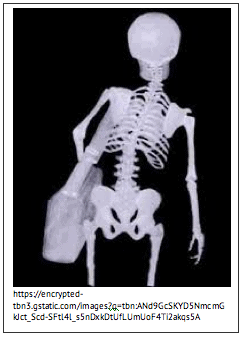
Seen from the back, the spine flexes to the right in order to hold the bag in place. The body is capable of organizing itself to allow us to do various daily activities such as carrying a bag on the shoulder without it falling off. However, prolonged periods of doing so can have a negative side effect.
Now we know why some of us feel backache after carrying a heavy bag for an extended time.
Why do we need to move and the work the spine laterally? The spine is not just about the abdominals and the back muscles. Other muscles like the obliques and quadratus lumborum surround the spine :
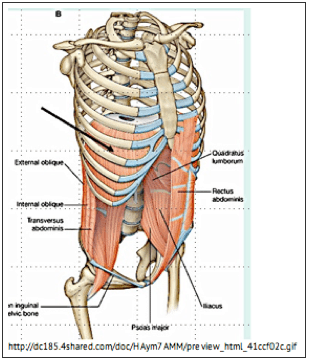
These muscles allow the spine to bend to the side, and if they are not stretched and strengthened as part of an exercise program, they would not be in a healthy condition to help organise the spine when the need arises e.g. when we need to place a bag to one side of the chair.
Below is an example of Side bend done in Pilates with the Fletcher Towel :
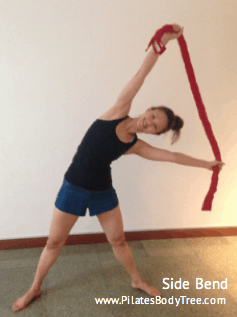
This movement works the muscles both ways – stretching and strengthening. The strengthening phase is when lifting the spine back up to vertical.
4. ROTATION
The spine can rotate to the right or left for us to do a number of activities such as reaching behind us while in a seated position, a golf swing or hitting a tennis ball using the backhand.
Have you come across someone who has strained his/her back while reaching to grab something from the back seat of a car? That is because the muscles that allow the spine to rotate are too tight.
Rotation is done in a number of Pilates exercises and for those of you familiar with Pilates Matwork, Saw includes spinal rotation and flexion :
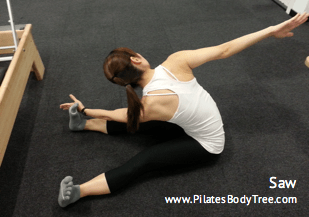
Beginners to Pilates Matwork usually find Saw challenging; yet with regular practice the Saw will help improve spinal mobility.
Pilates teachers would aim to incorporate all 4 types of spinal movements in a class to help promote spinal mobility.

